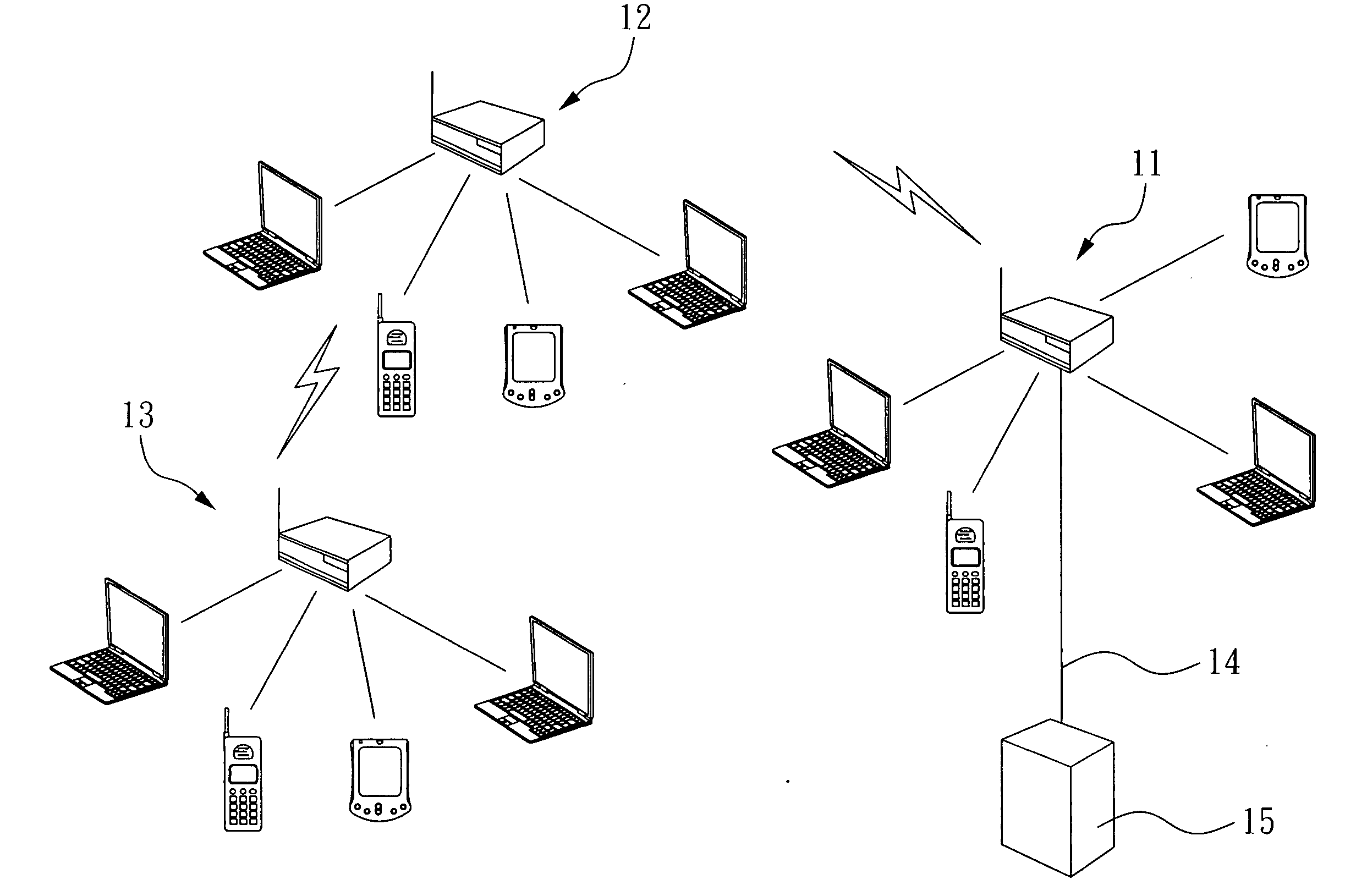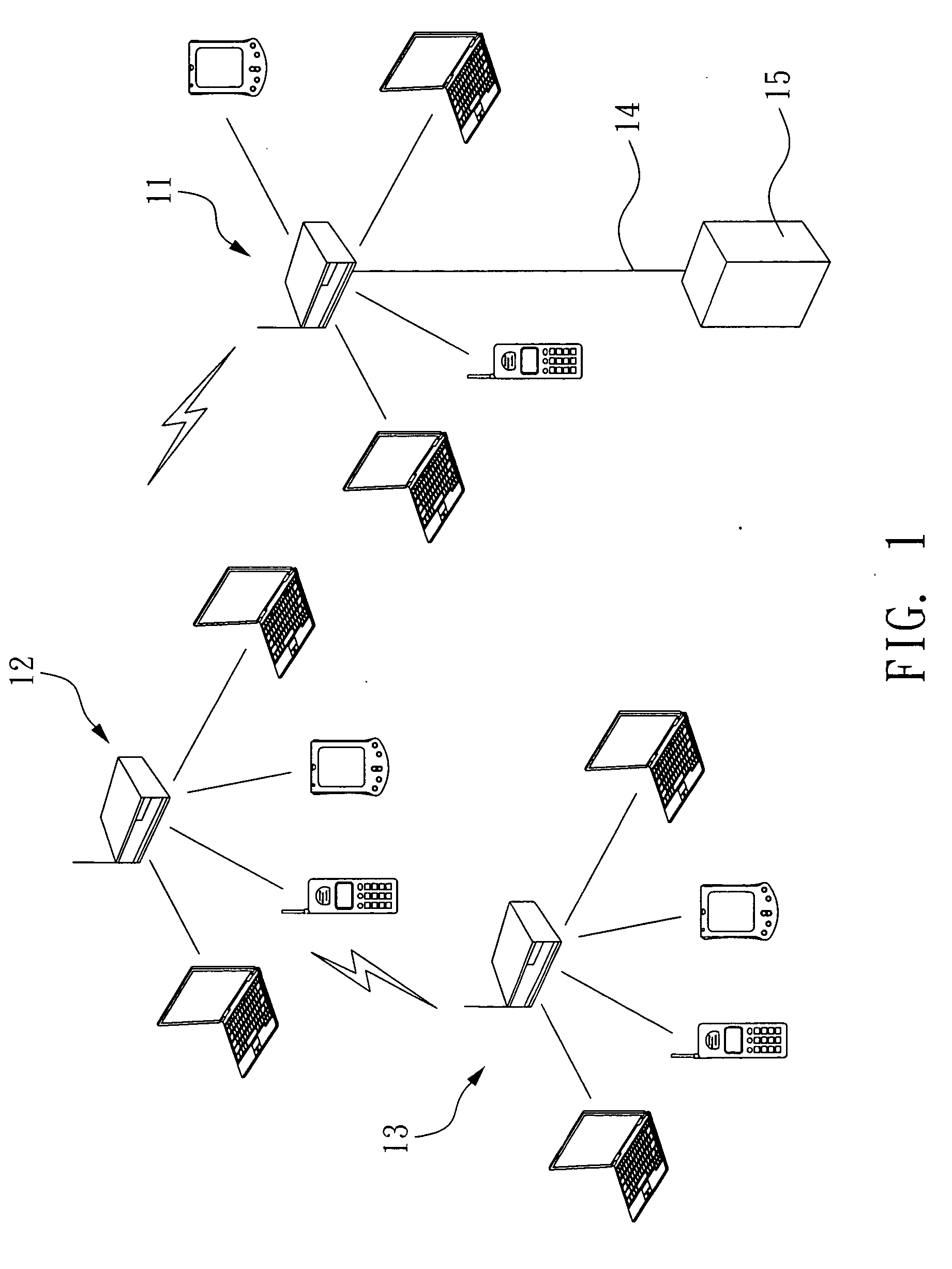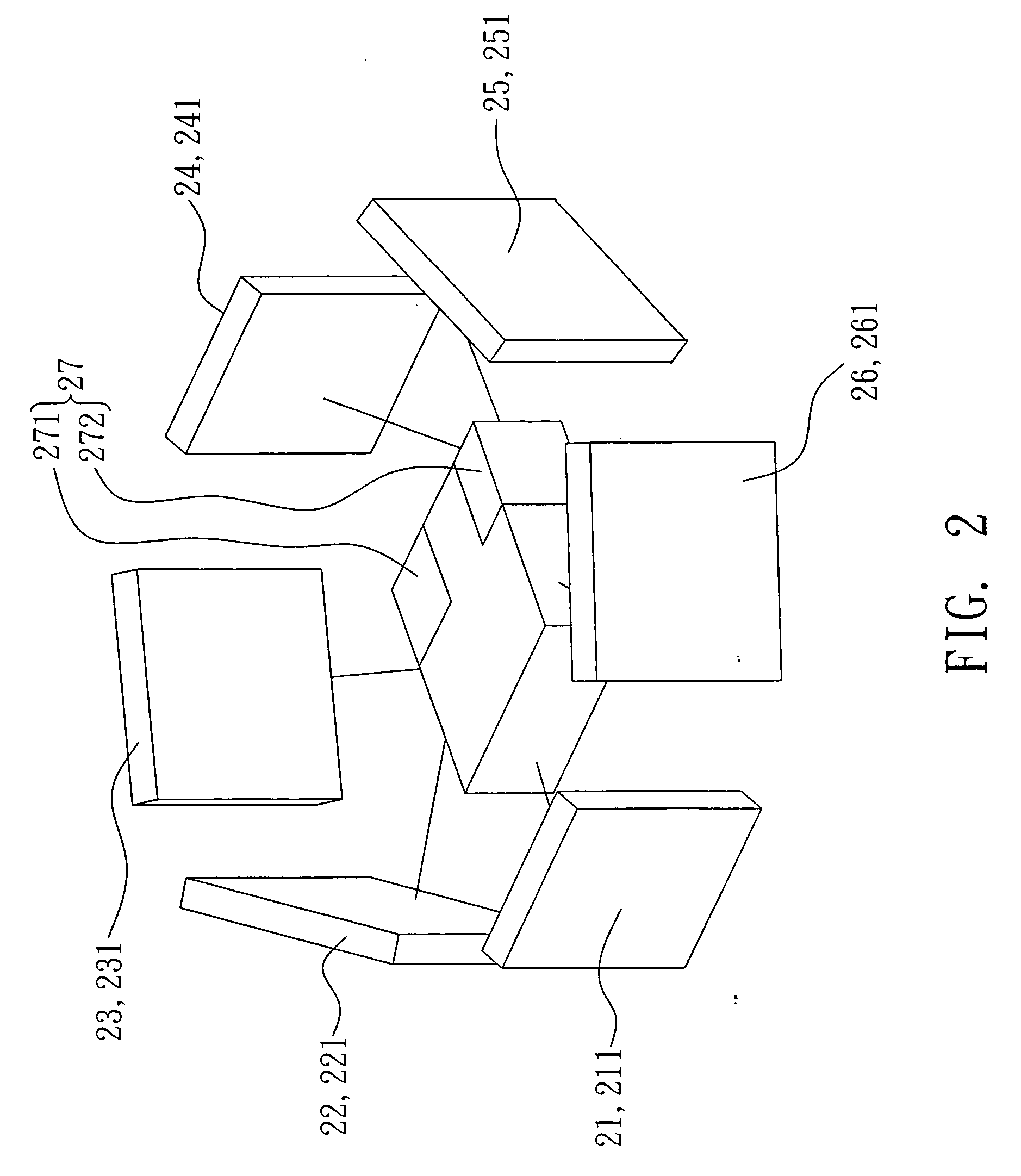Base station interference-free antenna module and WiFi base station mesh network system using the antenna module
a technology of base station and mesh network system, which is applied in the direction of wireless communication, network topologies, wireless commuication services, etc., can solve the problems of poor wireless network transmission efficiency, signal loss, and ineffective improvement of signal to noise ratio (snr) of wireless transmission, so as to increase the wireless transmission efficiency of high frequency signals
- Summary
- Abstract
- Description
- Claims
- Application Information
AI Technical Summary
Benefits of technology
Problems solved by technology
Method used
Image
Examples
Embodiment Construction
[0020]FIG. 2 is a schematic view of a base station interference-free antenna module according to an embodiment of the invention. As shown in FIG. 2, the module includes a plurality of high frequency transceivers 21 to 26 and an antenna controller 27. The high frequency transceivers 21 to 26 face different directions respectively, and the antenna controller 27 is electrically coupled to the high frequency transceivers 21 to 26 respectively. In addition, the base station interference-free antenna module is implemented in a wireless fidelity (WiFi) base station (shown later) and applied to a high frequency signal transmission between the WiFi base station and another WiFi base station (shown later).
[0021]The WiFi base station (shown later) with the base station interference-free antenna module has a signal processor (shown later), and the antenna controller 27 is electrically coupled to the signal processor (shown later). The antenna controller 27 is based on a signal transmitting / rece...
PUM
 Login to View More
Login to View More Abstract
Description
Claims
Application Information
 Login to View More
Login to View More - R&D
- Intellectual Property
- Life Sciences
- Materials
- Tech Scout
- Unparalleled Data Quality
- Higher Quality Content
- 60% Fewer Hallucinations
Browse by: Latest US Patents, China's latest patents, Technical Efficacy Thesaurus, Application Domain, Technology Topic, Popular Technical Reports.
© 2025 PatSnap. All rights reserved.Legal|Privacy policy|Modern Slavery Act Transparency Statement|Sitemap|About US| Contact US: help@patsnap.com



